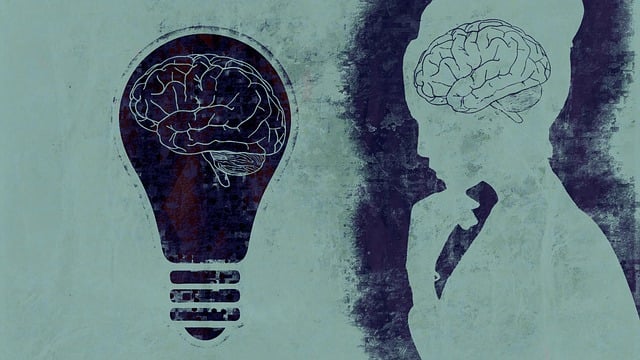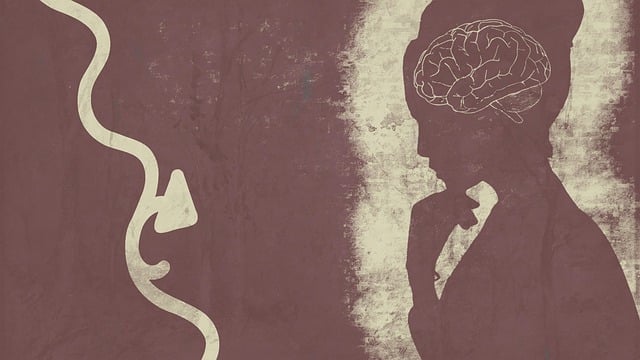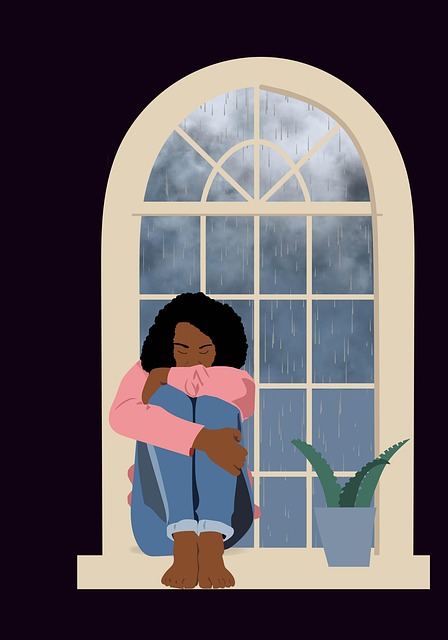Risk assessment is a core component of effective therapy, especially for young children and couples counseling. It identifies potential harms and evaluates their impact on clients' mental health, guiding therapists in implementing strategies to minimize risks. In couples counseling, this involves assessing interpersonal dynamics and past trauma, while with young children, considerations include developmental stage and environmental triggers. This process enables professionals to integrate evidence-based practices and self-care strategies, enhancing therapy outcomes for both populations. For young children, minimizing harms may involve tailored interventions, mood management, and creating safe environments; for couples, counseling promotes communication, conflict resolution, and mental health education. A comprehensive harm minimization plan is crucial, focusing on tailored strategies, Mental Health Education Programs, and continuous evaluation to ensure positive therapy outcomes while prioritizing client safety.
In the field of therapy, risk assessment and harm minimization are paramount, especially when working with young children and couples. This comprehensive guide delves into the essential practices of safe therapy practices, focusing on identifying potential harms specific to pediatric and couple’s counseling settings.
We explore how a solid understanding of risk assessment forms the foundation for secure therapeutic environments, ultimately guiding the development of effective harm minimization plans. Discover practical strategies for implementation and continuous evaluation to ensure the highest standards of care.
- Understanding Risk Assessment: A Foundation for Safe Therapy
- Identifying Potential Harms in Young Children's Therapy
- The Role of Couples Counseling in Mitigating Risks
- Developing a Comprehensive Harm Minimization Plan
- Implementing Strategies and Continuous Evaluation
Understanding Risk Assessment: A Foundation for Safe Therapy

Risk assessment forms the cornerstone of any comprehensive therapy approach, especially when catering to young children and couples seeking counseling. It involves a meticulous process of identifying potential hazards and evaluating their likelihood and impact on clients’ mental health and overall well-being. By understanding these risks, therapists can implement tailored strategies for harm minimization, ensuring a safe and supportive environment.
In the context of therapy for young children and couples counseling, risk assessment enables practitioners to anticipate challenges unique to each client population. For instance, in couples counseling, assessing interpersonal conflicts, communication patterns, and past trauma is crucial. Meanwhile, with young children, therapists must consider their developmental stage, emotional regulation skills, and potential triggers from their environment. This foundational step empowers mental health professionals to integrate evidence-based practices and self-care strategies (Mental Health Policy Analysis and Advocacy) into their work, ultimately enhancing the effectiveness of therapy sessions (Self-Care Practices, Mental Wellness Podcast Series Production).
Identifying Potential Harms in Young Children's Therapy

Identifying potential harms is a crucial step in any risk assessment process, especially within therapy settings catering to young children. This includes both direct and indirect risks associated with various therapeutic practices, such as couples counseling designed for parents or primary caregivers. Harms could manifest in emotional distress, increased anxiety, or even regression in development, particularly if the child’s unique needs are not adequately addressed. For instance, intense emotions spurred by exposure therapy might overwhelm a young patient, leading to flashbacks or severe panic attacks.
In the context of mental health policy analysis and advocacy, understanding these potential harms is vital for developing robust burnout prevention strategies for healthcare providers working with young children. Effective harm minimization planning involves tailoring interventions to suit individual child’s needs, incorporating mood management techniques in couples counseling sessions, and ensuring a safe, supportive environment. This proactive approach not only protects the well-being of young clients but also fosters their long-term mental health and development.
The Role of Couples Counseling in Mitigating Risks

Couples counseling plays a pivotal role in mitigating risks and fostering healthy relationships, especially when it comes to families with young children. This type of therapy provides a safe space for partners to improve communication, resolve conflicts, and enhance their understanding of each other’s needs, including those of their offspring. By engaging in self-awareness exercises, couples can better navigate the challenges of parenting, ensuring their reactions are age-appropriate and supportive rather than detrimental.
Incorporating mental health education programs design tailored for couples can equip them with valuable tools to manage stress and prevent burnout. These programs often include strategies for effective problem-solving, emotional regulation, and conflict resolution skills, which are essential in maintaining a stable family environment. Through counseling, partners can learn to recognize warning signs of potential risks and take proactive measures to protect their children’s mental well-being, thereby minimizing harm and fostering a more secure family dynamic.
Developing a Comprehensive Harm Minimization Plan

Developing a comprehensive harm minimization plan is essential for addressing potential risks and promoting positive outcomes in therapy settings, particularly when catering to young children and couples counseling. This process involves a systematic approach to identify, assess, and mitigate any harmful effects that may arise during therapeutic interventions. By incorporating strategies tailored to each client’s unique needs, mental health professionals can foster an environment that supports emotional healing processes and depression prevention.
Effective harm minimization plans should include well-designed Mental Health Education Programs that equip both clients and their support systems with valuable knowledge and skills. These programs aim to enhance overall mental wellness while also teaching coping mechanisms for managing challenging situations. Through such initiatives, couples counseling sessions can become more productive, allowing partners to navigate their issues collaboratively. Ultimately, a robust plan ensures the safety and well-being of clients throughout their therapeutic journey.
Implementing Strategies and Continuous Evaluation

Implementing effective risk assessment strategies is a dynamic process that requires continuous evaluation and adaptation. In the context of therapy for young children and couples counseling, professionals must stay vigilant in identifying potential risks and harm minimization opportunities. Regularly reviewing and updating assessment tools ensures that practices align with the latest research and real-world application.
Cultural sensitivity in mental healthcare practice plays a pivotal role in this process. By incorporating mindfulness meditation and compassion cultivation practices, therapists can foster an environment of trust and understanding, facilitating deeper connections with clients. This holistic approach not only strengthens therapeutic alliances but also empowers individuals to navigate challenges more effectively, ultimately enhancing the overall success of treatment plans.
Risk assessment and harm minimization planning are essential components of providing safe and effective therapy, particularly in young children’s counseling. By understanding potential risks and implementing strategies like couples counseling, therapists can create a comprehensive plan to mitigate any negative impacts. This approach ensures that therapy remains beneficial while prioritizing the well-being of young clients and their families, making it a vital practice in the field of mental health care for young children and involving couples counseling when necessary.














